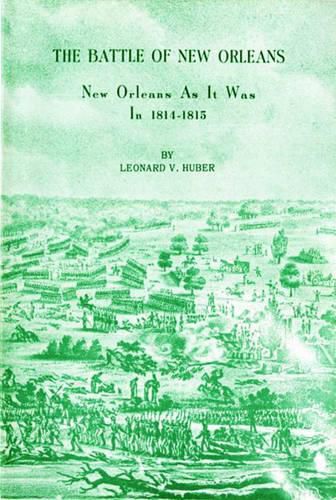Readings Newsletter
Become a Readings Member to make your shopping experience even easier.
Sign in or sign up for free!
You’re not far away from qualifying for FREE standard shipping within Australia
You’ve qualified for FREE standard shipping within Australia
The cart is loading…






This written and pictorial history describes New Orleans during the early nineteenth century, with an emphasis on Andrew Jacksons presence in the city. The book begins with a drawing of the proposed layout for New Orleans from 1815 by Jacques Tanesse, a city surveyor. Following sections provide an explanation for such locales as the Place dArmes, which comprise the Cabildo, the St. Louis Cathedral, the Presbytere, and the Pontalba Buildings. The volume provides a historical background for the Ursuline Convent; the U.S. Custom House; College dOrleans, the first institution of higher learning in the city; and St. Louis No. 1, which was the only open cemetery at the time, among other sites. Descriptions of each establishment incorporate information about the architecture, along with its past and present status. Other New Orleans landmarks mentioned in the text include the Orue-Pontalba House and the Girod House. Firsthand testimony describes such scenes as Levee Street, a landing place for steamboats, and the Market-house, where buyers and sellers of various ethnicities exchanged goods. Period illustrations provide the reader with a visual reference.
$9.00 standard shipping within Australia
FREE standard shipping within Australia for orders over $100.00
Express & International shipping calculated at checkout
This written and pictorial history describes New Orleans during the early nineteenth century, with an emphasis on Andrew Jacksons presence in the city. The book begins with a drawing of the proposed layout for New Orleans from 1815 by Jacques Tanesse, a city surveyor. Following sections provide an explanation for such locales as the Place dArmes, which comprise the Cabildo, the St. Louis Cathedral, the Presbytere, and the Pontalba Buildings. The volume provides a historical background for the Ursuline Convent; the U.S. Custom House; College dOrleans, the first institution of higher learning in the city; and St. Louis No. 1, which was the only open cemetery at the time, among other sites. Descriptions of each establishment incorporate information about the architecture, along with its past and present status. Other New Orleans landmarks mentioned in the text include the Orue-Pontalba House and the Girod House. Firsthand testimony describes such scenes as Levee Street, a landing place for steamboats, and the Market-house, where buyers and sellers of various ethnicities exchanged goods. Period illustrations provide the reader with a visual reference.